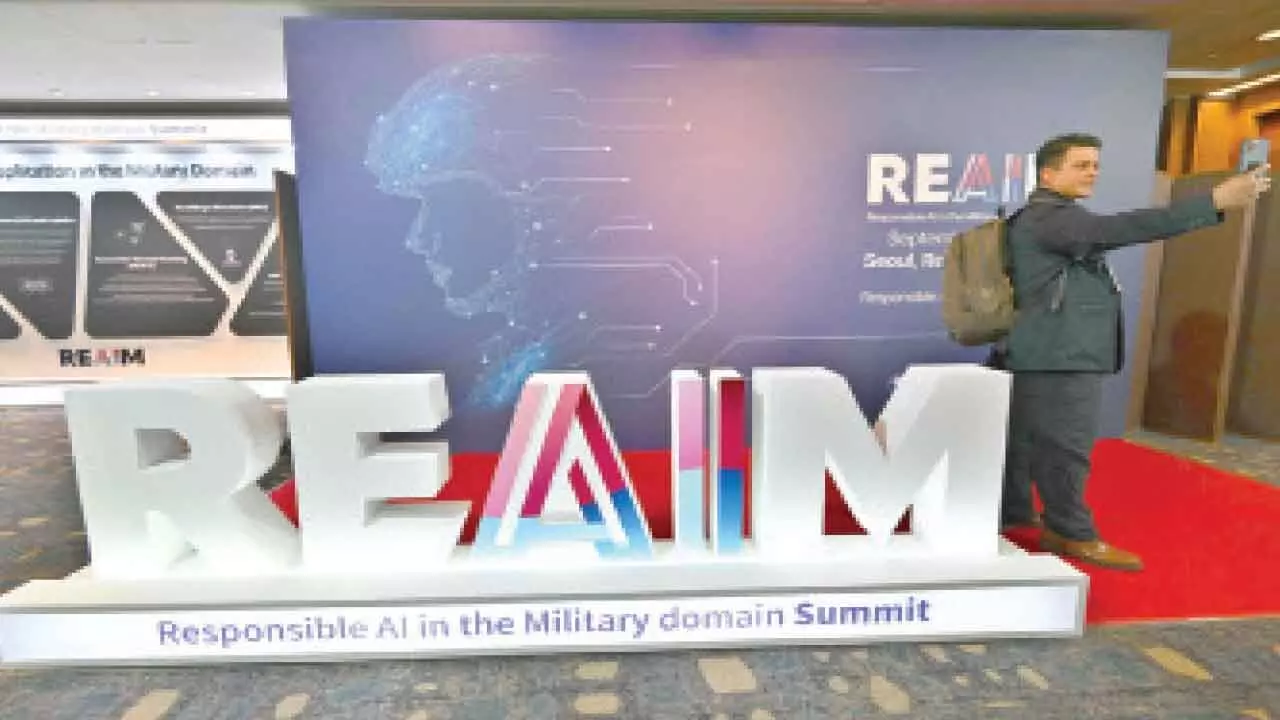Use Of AI In Military Domain Needs A Consensus On Proposed ‘Blueprint For Action’
Military use of AI has increased due to the Russia-Ukraine and Israel-Palestine conflicts
Use Of AI In Military Domain Needs A Consensus On Proposed ‘Blueprint For Action’

Other studies refer to the practices around AI – such as design, development and use – being responsible. These would mean practices that are lawful, traceable and reliable and focused on mitigating bias
Last week, some 2,000 government officials and experts from around the world met for the REAIM (Responsible Artificial Intelligence in the Military Domain) summit in Seoul. This was the second event of its kind, with the first one held in the Netherlands in February 2023.
During this year's summit, 61 countries endorsed a “Blueprint for Action” for governing the development and use of artificial intelligence (AI) by the military.
However, 30 countries, including China, sent a government representative to the summit but didn't endorse the blueprint. The blueprint is an important, if modest, development. But there is still a gap in the understanding of what constitutes responsible use of AI and how this translates into concrete actions in the military domain.
AI use in military contexts:
Military use of AI has increased over the last few years, most notably in the Russia-Ukraine and Israel-Palestine conflicts.
Israel has used AI-enabled systems known as “Gospel” and “Lavender” to help it make key military decisions, such as which locations and people to target with bombs. The systems use large amounts of data, including people's addresses, phone numbers and membership of chat groups. The “Lavender” system in particular made headlines earlier this year when critics questioned its efficacy and legality. There was particular concern around its training data and on how it classified targets. Incidentally, both Russia and Ukraine use AI to support military decision making.
Satellite imagery, social media content and drone surveillance are just some of the many information sources which generate copious volumes of data. AI can analyse this data much more quickly than humans could. The results are incorporated into existing “kill chains” – the process of locating, tracking, targeting and engaging targets. It means military officials can make faster decisions during active armed conflict, providing tactical advantages.
However, misuse of AI systems can also result in potential harm. Civil society and non-governmental organisations such as the International Committee of the Red Cross have warned about the risks.
For example, algorithmic bias can exacerbate the risk to civilians during active warfare.
Responsible AI in military domain:
There is no consensus on what constitutes “responsible” AI. Some researchers argue that the technology itself can be responsible. In this case, “responsible” would mean having built-in fairness and freedom from bias.
Other studies refer to the practices around AI – such as design, development and use – being responsible. These would mean practices that are lawful, traceable and reliable and focused on mitigating bias.
The blueprint endorsed at the recent summit in Seoul aligns with the latter interpretation. It advocates that anyone using AI in the military must comply with relevant national and international laws. It also highlights the importance of human roles in the development, deployment and use of AI in the military domain. This includes ensuring human judgement and control over the use of force is responsibly and safely managed. This is an important distinction, because many narratives around AI falsely imply an absence of human involvement and responsibility.
What can governments do to use military AI responsibly? Discussions at the summit focused heavily on concrete steps governments can take to support responsible use of military AI. As military AI use is currently increasing, we need interim steps to deal with it. One suggestion was to strike AI regulation agreements within different regions, rather than taking longer to reach a global, universal consensus. To improve global cooperation on military AI, we could also heed lessons from previous global challenges – such as nuclear non-proliferation, saving the ozone layer and keeping outer space and Antarctica demilitarised.
Around 18 months since last year’s inaugural summit, governments and other responsible parties have started putting into place risk-mitigation processes and toolkits for military AI. The blueprint reflects the progress since then, and the ideas discussed at the summit. It proposes a number of tangible steps, which include: -universal legal reviews for AI-enabled military capabilities -promoting dialogue on developing measures to ensure responsible AI in the military domain at the national, regional and international levels -maintaining appropriate human involvement in the development, deployment and use of AI in the military domain.
However, the progress is slow because we still don't have a universal understanding of what responsible military AI actually looks like. The need to cut thorough these issues is now putting pressure on the next summit (not yet announced). The Netherlands has also set up an expert body to further a globally consistent approach to military AI.
Humanity can benefit from AI tools. But we urgently need to ensure the risks they pose don't proliferate, especially in the military domain.
(The writer is from Australian National University)

